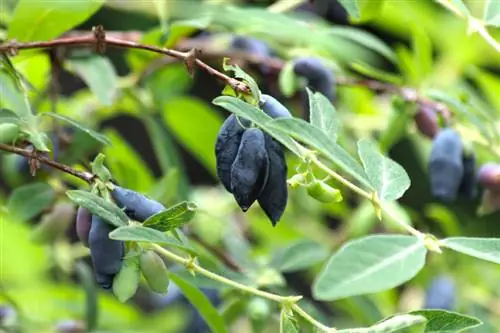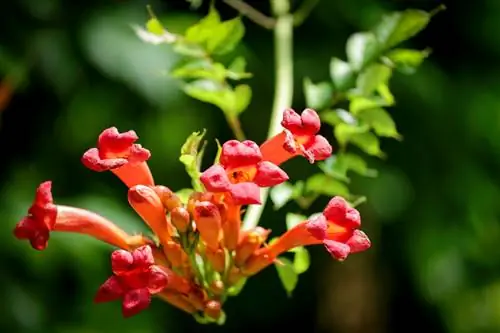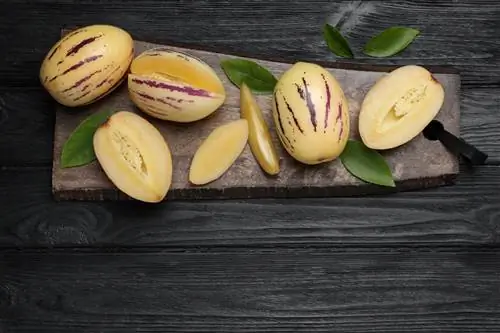- Author admin [email protected].
- Public 2023-12-16 16:46.
- Last modified 2025-01-23 11:21.
Poisonous plants grow in many gardens where children play without parents knowing about this danger. The little ones love making soup from tempting-looking berries or snacking on the supposedly he althy greens. That's why today's article deals with:

Which poisonous plants are dangerous for children in the garden?
Poisonous garden plants that can be dangerous for children include ivy, lily of the valley, laburnum, foxglove, arborvitae (thuja) and yew. Parents should check their garden for such plants and take appropriate action if there is any danger.
- Ivy
- Lily of the valley
- Gold Rain
- Foxglove
- Tree of Life
- Yew
Ivy
Ivy is often placed on trellises, where it forms a dense, evergreen privacy screen. E Ivy protects itself from predators with triterpene saponins. These are considered poisonous for children. Snacking on the plant can lead to vomiting, diarrhea and fever.
Lily of the valley
As delicate and lovely as these spring bloomers look, they are poisonous plants. The leaves of the lily of the valley also look very similar to those of the popular wild garlic. All parts of the plant contain glycosides in different concentrations. If your child swallows leaves, flowers or berries, this can lead to nausea, vomiting, diarrhea and cardiac arrhythmias, which can be dangerous for the little ones.
Gold Rain
Out of ignorance, this is often even planted on the edge of playgrounds, as the bright yellow flower spikes look extremely attractive in spring. Eating just a few flowers and seeds that contain the toxin cytisine leads to a painful burning sensation in the mouth. If your child swallows the plant parts, nausea, vomiting and abdominal cramps will result. Swallowing five to eight seeds can even lead to fatal poisoning.
Foxglove (Digitalis)
The long, drooping flowers that resemble foxgloves make digitalis visually extremely attractive. Glycosides, anthranoids and sorbitols make foxglove a dangerous poisonous plant. If consumed, there is a risk of dizziness, breathing difficulties and cardiac arrhythmias. Just one or two leaves or flowers consumed can cause fatal poisoning.
Tree of Life (Thuja)
Thuja can be found in many home gardens, but it is usually unknown that it is poisonous. Branches and cones contain the essential oil thujone. This is used in natural medicine to combat warts. In case of skin contact, it can cause severe skin irritation in sensitive people. If plant parts are eaten, severe abdominal pain, nausea and vomiting result. There is also a risk of muscle cramps and even kidney damage.
Yew (Taxus)
The evergreen conifer is popular as a privacy screen and is often found in natural hedges. The bright red berries are very tempting to children. It's not the flesh that's dangerous, but the seeds inside. If this is chewed, the poison taxin is released. It causes nausea, vomiting, diarrhea, high fever, and dizziness. If several seeds are chewed and swallowed, this can lead to unconsciousness, heart failure and, in the worst case, death.
Tip
If you are concerned that your child has eaten a poisonous plant, you need to act quickly. Immediately dial the emergency number 112 (Germany) or 144 (Austria). Be sure to avoid making the child vomit and do not give the child milk to drink. Contrary to what you often read, this does not bind the poison, but actually accelerates the poisoning.






